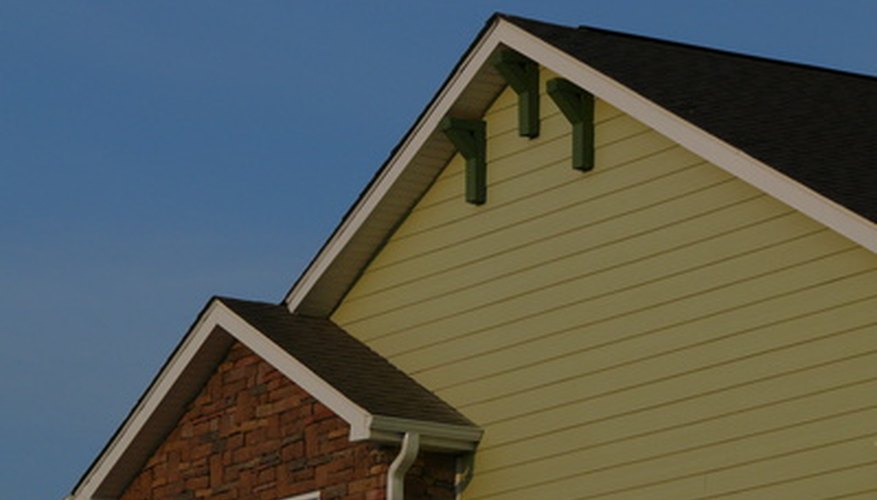A gable end roof overhang protects the home from moisture. The wider the overhang on the gable end, the less moisture infiltration. The minimum required overhang is determined by the local climate. The average overhang on a gable end is 30 to 60 cm (12 to 24 inches) wide. The overhang on a gable end is called a fly rafter. The fly rafter is one size smaller then the rest of the rafter, meaning if the rafters are 5 x 15 cm (2 x 6 inch) rafters, then the fly rafter will be a 5 x 10 cm (2 x 4 inch) rafter. The easiest way to build the overhang is to assemble it on the ground and have a helper assist you with the installation.
- A gable end roof overhang protects the home from moisture.
- The overhang on a gable end is called a fly rafter.
Measure the last gable end rafter from the angle to the end and determine the angle of the roof, using an angle finder. Using the determined measurement and angle, cut two rafters for each side of the gable end.
Measure, starting at the top of each of the rafter going down to the end; make a mark every 60 cm (24 inches). Cut a lookout for every mark made, including both ends of the rafters. Lookouts are the boards running vertically between the rafters, similar to the rungs on a ladder. If you are making a 30 cm (12 inch) overhang, cut the lookouts 22.5 cm (9 inches) long; for a 60 cm (24 inch) overhang, cut the lookouts 52.5 cm (21 inches) long, to allow for the 3.7 cm (1 1/2 inch) thickness of each of the rafters.
- Measure the last gable end rafter from the angle to the end and determine the angle of the roof, using an angle finder.
- Measure, starting at the top of each of the rafter going down to the end; make a mark every 60 cm (24 inches).
Nail the lookouts between the two rafters on the centre of each line and one on each end. The framing will look like a ladder. Do this for the other side of the gable end as well.
Lift the overhang framing up against the last rafter. With your helper holding the bottom half of the framing, line up the angle of the framing with the angle of the last rafter, to the outer edge of the last rafter, and nail every 40 cm (16 inches). Install the other end of the gable overhang the same way.
Sheath the roof with the plywood flush with the edge of the overhang and install the roofing.
TIP
Use 5 x 10 cm (2 x 4 inch) rafters if the rest of the rafters are 5 x 15 cm (2 x 6 inch) rafters, or use 5 x 15 cm (2 x 6 inch) rafters if the rest of the roof rafters are 5 x 20 cm (2 x 8 inch) rafters.
WARNING
Check your local building code for the minimum required gable end overhang.
